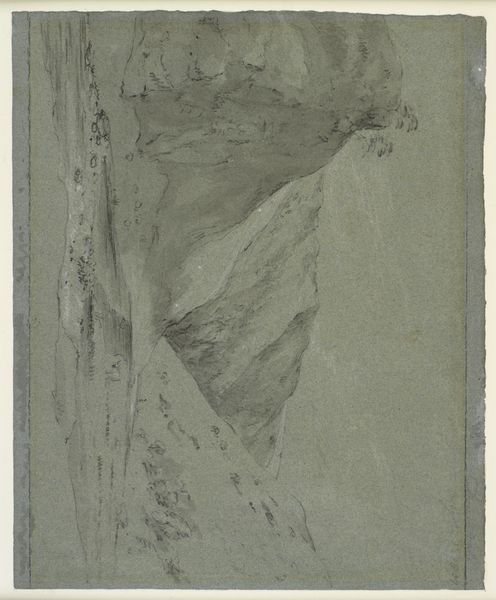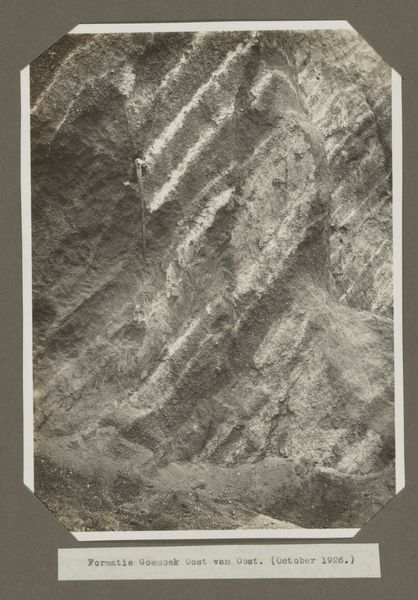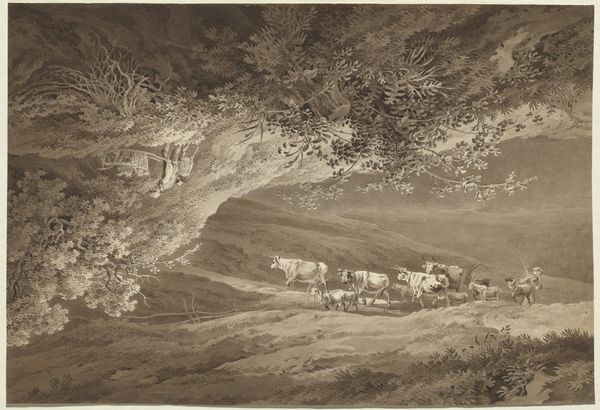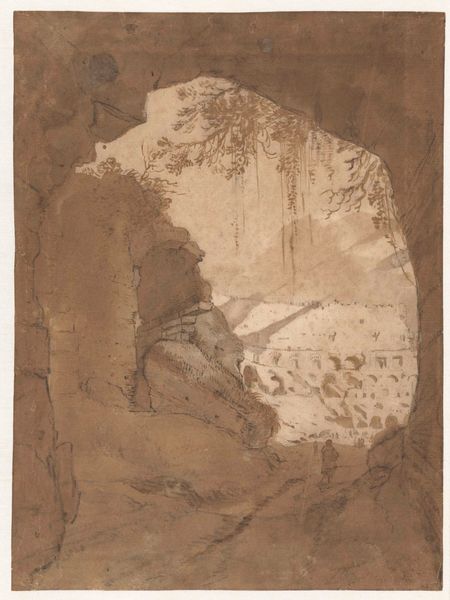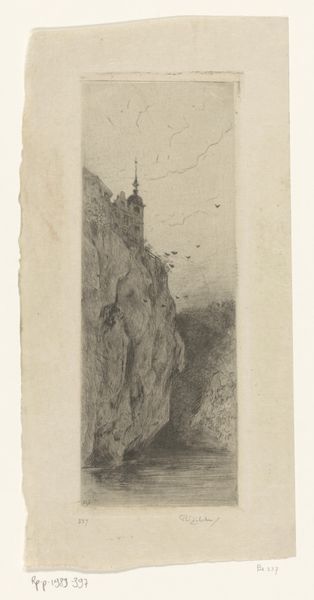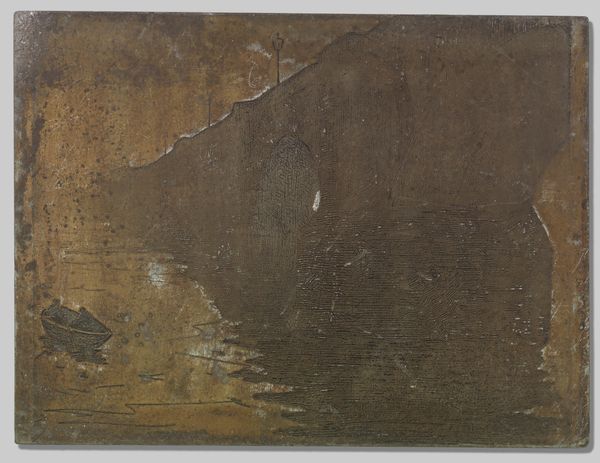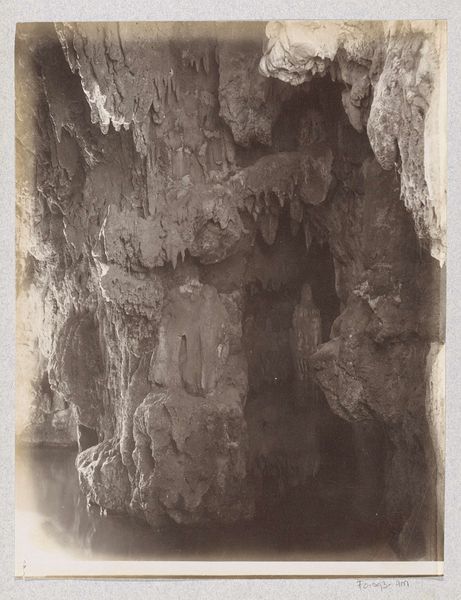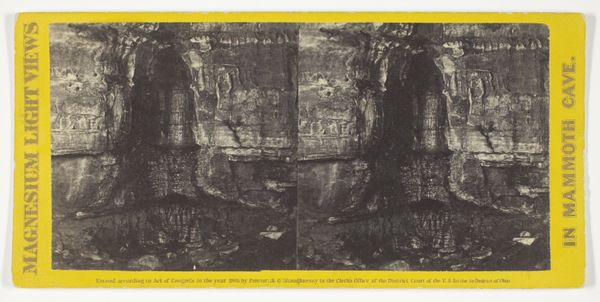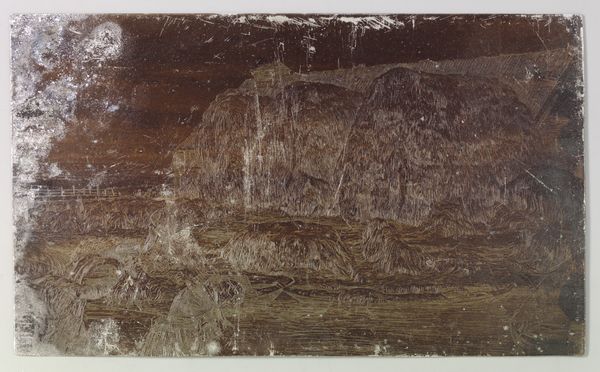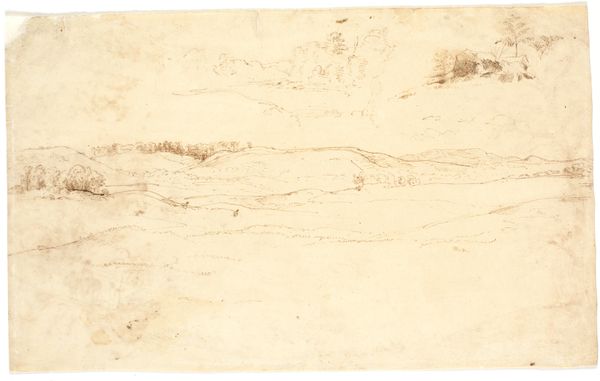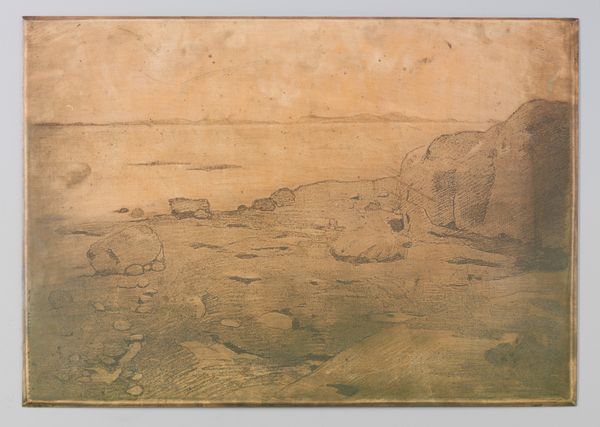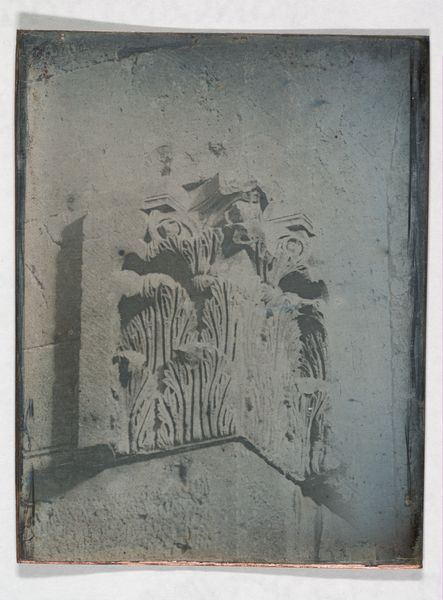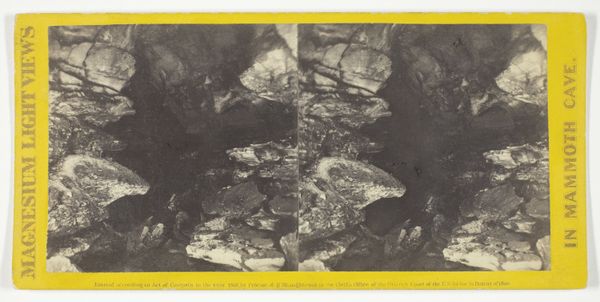
daguerreotype, photography, architecture
#
landscape
#
daguerreotype
#
photography
#
geometric
#
ancient-mediterranean
#
arch
#
orientalism
#
architecture
#
realism
Dimensions: Image: 3 11/16 × 9 1/2 in. (9.4 × 24.1 cm)
Copyright: Public Domain
Editor: Here we have Joseph-Philibert Girault de Prangey’s “Robinson’s Arch, Jerusalem,” a daguerreotype from 1844. The textures are so striking. There’s such a stark contrast between the carefully placed blocks and the crumbled section in the center. How do you interpret this contrast from a formalist perspective? Curator: I observe that the structural integrity—or the lack thereof—dictates the reading of this work. Consider how the linear precision of the constructed wall plane gives way to the chaotic dissolution of form towards the center. Note the geometric tension established. How does that impact our reading of the image? Editor: I suppose it pulls your eye to the fractured section of the arch; it’s impossible to ignore. Is the degradation of geometric forms suggesting a message about time? Curator: Potentially, but I am particularly compelled by the diagonal progression— the fracturing suggests dynamism, even decay. Consider the tonal values as well. Notice how the highlights and shadows play across the surface, defining form but also obfuscating detail. Is it documenting or representing the arch, and how can we distinguish between the two, formally? Editor: I see what you mean. The light isn’t just revealing the scene; it’s an active part of the composition. Thank you! Looking at it this way has really made me think about how to consider the material presentation, not just the subject. Curator: Indeed! I find that by attending to structure, the composition comes to life and, conversely, the image gains historical gravity.
Comments
No comments
Be the first to comment and join the conversation on the ultimate creative platform.
